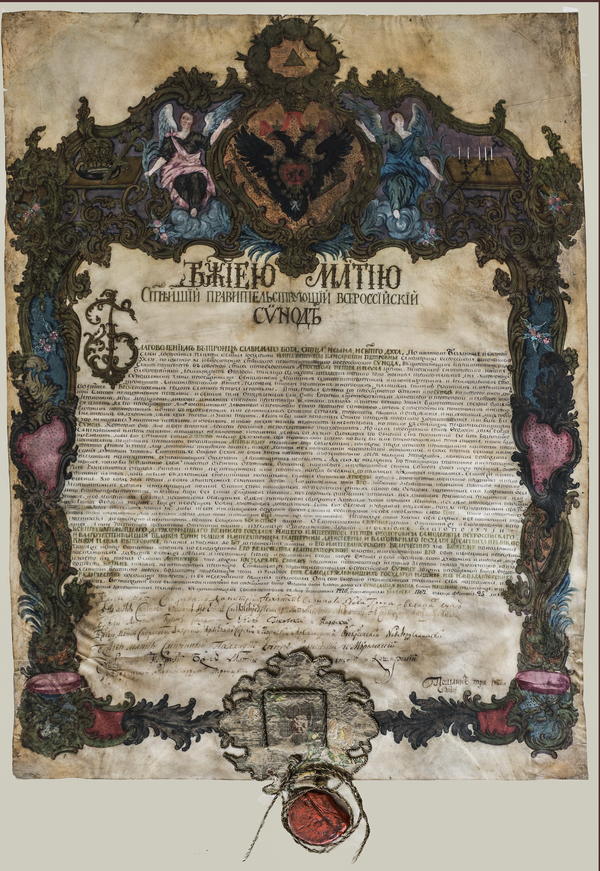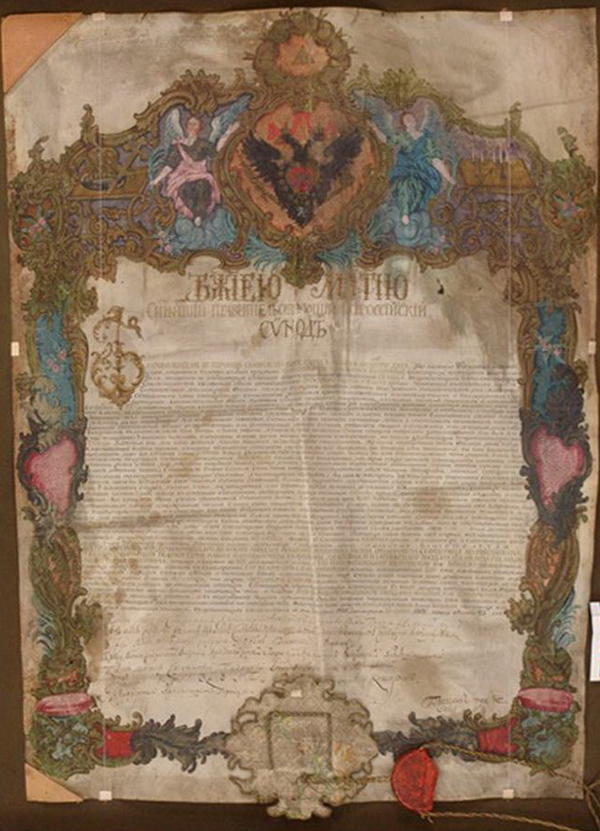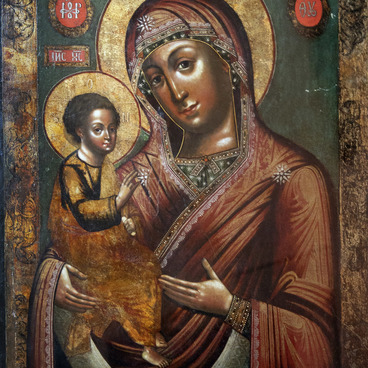In November 1761, Archimandrite Theodosius Golosnitsky was appointed Head of the Veliky Ustyug diocese in the Vologda region. In February 1762, the Holy Synod, highest church authority in Russia, prepared and issued the new bishop the Synodal deed, also called Synodal muniment. Many years later, the deed was found by one of the members of the Tambov Archival Research Commission and donated to the museum.
The letter is written on parchment with soot ink, thick and saturated ink for writing made with the addition of soot or based on it. The document is dated February 25, 1762. The sheet is decorated with interwoven rocaille ornaments that included various artfully curved flourishes in the shape of shells, scrolls and small pebbles.
The text is written in semi-block lettering, a form of Cyrillic writing, which, unlike the block lettering, allowed smaller and rounded letters. The clerk used cursive elements, such as flourishes, abbreviations and ligatures, or signs that depicted several letters at once. Two versions of the date stand at the end of the deed: 7270 from the creation of the world and 1762 from the Nativity of Christ.
The letter is written on parchment with soot ink, thick and saturated ink for writing made with the addition of soot or based on it. The document is dated February 25, 1762. The sheet is decorated with interwoven rocaille ornaments that included various artfully curved flourishes in the shape of shells, scrolls and small pebbles.
The text is written in semi-block lettering, a form of Cyrillic writing, which, unlike the block lettering, allowed smaller and rounded letters. The clerk used cursive elements, such as flourishes, abbreviations and ligatures, or signs that depicted several letters at once. Two versions of the date stand at the end of the deed: 7270 from the creation of the world and 1762 from the Nativity of Christ.




